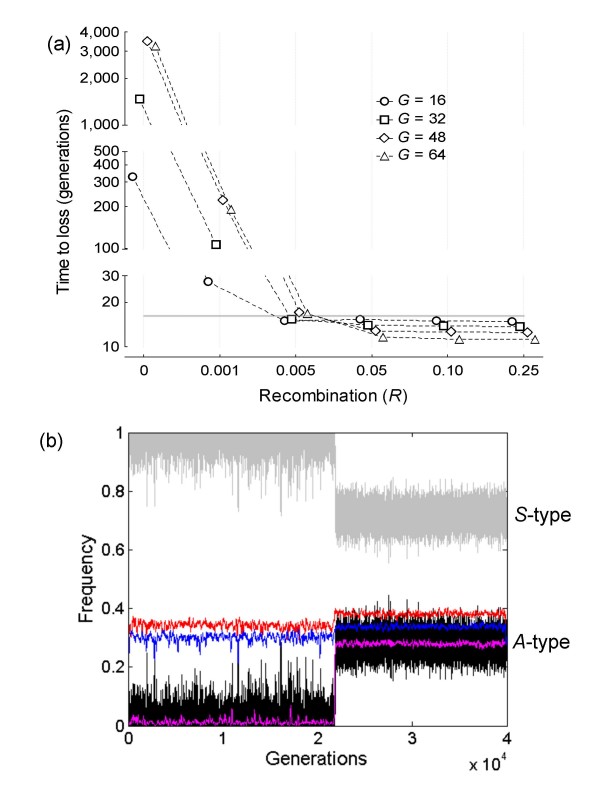Figure 2.
Multilocus trait-group model. (a) Semi-log plot for the mean time to loss of the strongly altruistic trait coded by allele A as a function of R estimated from independent simulation trials with up to 50,000 generations each. Population size was kept constant with n = 4 and m = 60. Allele A was surrounded by G = 16, 32, 48, 64 loci. The dotted horizontal line at generation 16 indicates the mean persistence time of allele A for the single gene situation, where the total number of introductions in a typical trial was > 3, 000 and the maximum number of generations before allele A was lost ~100. When surrounded by the G loci, the number of introductions of the A allele into the population was obviously dependent on its ultimate fate, ranging from 43 (R = 0) to > 20, 000 (R ≥ 0.10) when all trials for a given set of G loci are considered. (b) Sample simulation with G = 8 and R = 0 that illustrates the eventual locking in quasi-equilibrium state of the A-type due to complementary segregating haplotypes. After introduction 1,532 at generation 21,843 the A-type (dark black jagged line pattern) remained segregating in the population, whose genotypic composition consisted of three haplotypes: [1211S2112] in red at average frequency 0.3817, [1322S3121] in blue at 0.3382, and [2133A1313] in magenta at 0.2802 (equilibrium frequency of the A-type). To enhance visibility the haplotype line patterns were smoothed by using a moving average of 100 generations.

